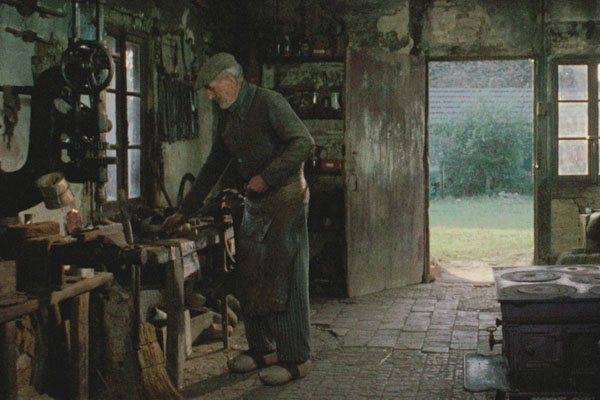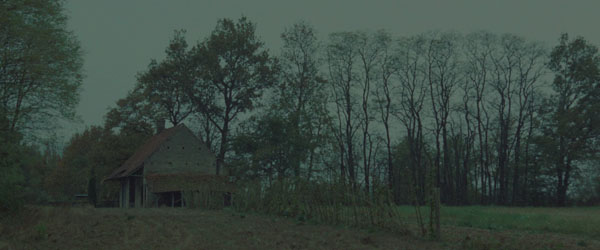“Despite wowing viewers and winning an award at the 1973 Locarno International Film Festival, Dominique Benicheti’s you-are-there chronicle of French blacksmith Jules Guiteaux and his wife, Félicie, going about their daily business seemed destined for eternal obscurity,” notes David Fear in Time Out New York. “The documentarian insisted that his labor of love be shown only in CinemaScope and with stereo sound, exactly as he shot it; distributors balked at the notion of shelling out extra dough to make prints that many theaters, sans the proper equipment, wouldn’t be able to show. So there Benicheti’s poetic ode to a bygone rural world sat, wasting away, until fans funded a digital restoration of the movie, the New York Film Festival gave the DCP a belated American screening in 2012—and Cinema Guild and Film Forum picked up the ball for a full theatrical run.” Which begins today and carries on through December 10.
“After the events of May ’68, many French activists and intellectuals looked toward the past for hints of how to construct a future,” writes Jesse Cataldo at Slant. “Finding inspiration in the prudent self-sufficiency of the country’s rural breadbasket, a new crop of rustic films emerged, exploring the possibility of heading back to the land. The best of these—the workaday pragmatism of Georges Roquier’s Biquefarre and the rigorous self-assessment of Alain Tanner’s Jonah, Who Will Be 25 in the Year 2000—pushed past wishful thinking toward real considerations of the mechanics of agricultural settings. Benicheti’s film feels just as concerned with future issues interpreted through a traditional lens, turning what could have been a straightforward document into an almost Marxist disquisition on a man who operates within his own discrete economic arrangement, while functioning as part of a larger system of intertwined pastoral tradition.”
“Jules, a blacksmith, works with a hand-cranked bellows and a battered metal stove, hammering out hasps and hinges with an ease and precision that represent generations of handed-down know-how,” writes A.O. Scott in the New York Times. “His labor has an almost musical quality, enhanced by Mr. Benicheti’s sharp and subtle sound design. The first part of Cousin Jules follows the couple through a day that is most likely the composite of many such days: chores punctuated by lunch in the kitchen and afternoon coffee in the barn. Jules and Félicie are residents of what is sometimes called ‘la France profonde,’ a steadfast agricultural domain that has existed in parallel, and sometimes in opposition, to the industry and cosmopolitanism of Paris and other French cities.”
The New Yorker‘s Richard Brody notes that “Benicheti’s observations don’t offer much depth or insight—what happened there during the war? How do they make their money? What’s in that newspaper that Jules reads at lunch? The movie is resolutely non-analytical, but it may leave a viewer hyper-alert to his own routine gestures and sounds.”
“Cousin Jules could not be described as fly-on-the-wall by any means,” notes Scott Tobias at the Dissolve. “There are tracking shots, multiple camera angles, and other indicators that Benicheti ‘staged’ reality in much the same way Flaherty did in Nanook of the North…. It’s a deliberately limited perspective, but carried out with extraordinary rigor and sensuality.”
Benjamin Mercer at the L: “Jules’s workshop may no longer stand today, but thankfully this remarkable document, at once becalming and bleak, does.”
“Cousin Jules earns an oft trotted-out maxim,” adds Zachory Wigon in the Voice. “This film is unlike any other you will see all year.”
Updates, 12/6: “If Bresson and Tati introduced modernism to the French cinema’s soundscapes, Benicheti picked up the baton,” notes Steven Erickson here in Keyframe.
Amy Taubin for Artforum: “In an interview with Film Quarterly’s Lee Atwell in 1975, after Cousin Jules had won praise in festivals from Moscow to Los Angeles’s Filmex, Benicheti said that using ’scope was his only way of competing with television (the same logic Hollywood had used in the 1950s). And why shouldn’t an artisanal lifestyle on the verge of extinction, practiced unquestioningly by two people for their entire adult lives, be rendered in a scale comparable to the fictional Lawrence of Arabia?”
“It is also the rare documentary that, although observational almost in the mode of a scientist in the field, unfolds in fluidly choreographed tracking shots that function as rhymes to or intensifications of the actions on screen,” adds David Gregory Lawson, writing for Film Comment. “As Félicie cranks a bucket down into a well, her arms moving steadily up and down in a circular motion, Benicheti’s camera tracks in a 180-degree curve around her into a profile shot, an arc describing an arc.”
Mostafa Heddaya for Hyperallergic: “Cousin Jules negates the calculus of power and significance, the abacus of hour and era, and plumbs instead the ritual depths of daily life in search of a more gossamer sum.”
For news and tips throughout the day every day, follow @KeyframeDaily on Twitter and/or the RSS feed. Get Keyframe Daily in your inbox by signing in at fandor.com/daily.





